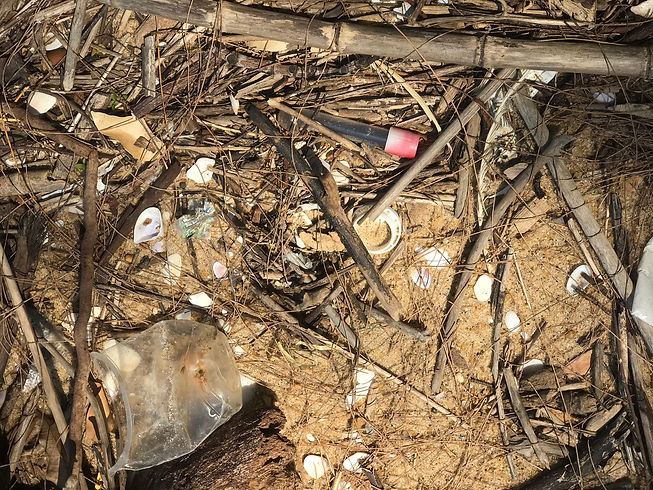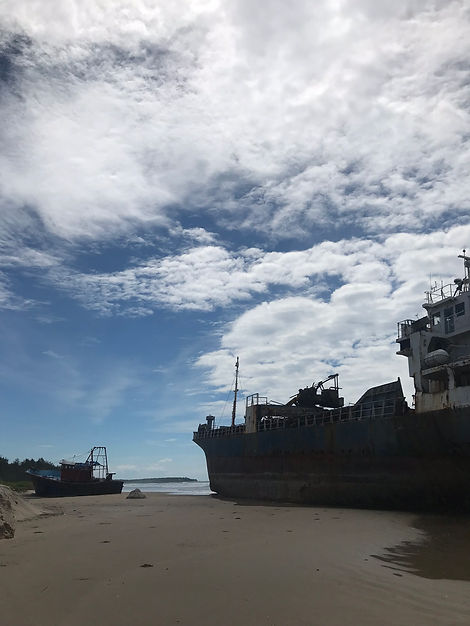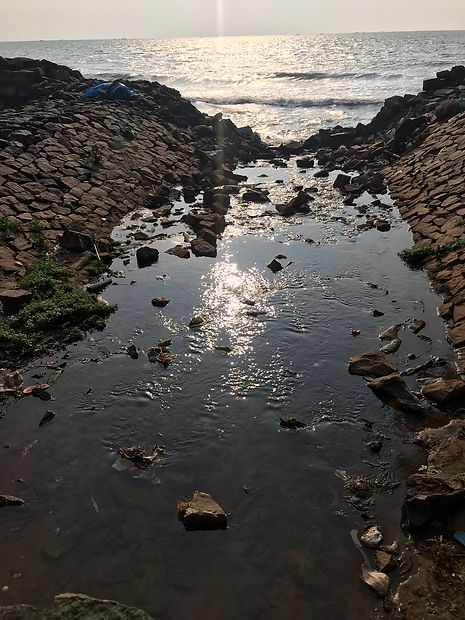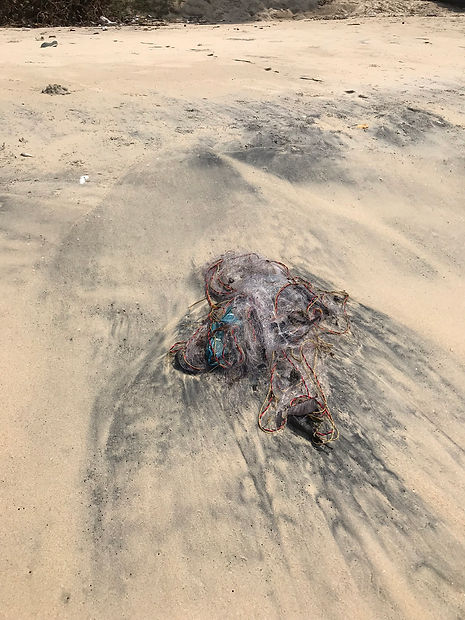
Solid Waste Across the Coastline of Kerala
A Visual Report in collaboration with Kerala Suchitwa Mission

What I expected to see was completely different from what I saw. I expected to find a lot more sanitary napkins, thin plastic bags, more obvious chemical pollution and other textbook things that I’ve learnt all my life. Instead, the most significant quantities of solid waste turned out to be in the form of slippers and shoes, plastic water bottles, diapers, medical waste and household waste. The chemicals I saw polluting the ocean were in the form of thin oily surfaces (often near ferries and the shipbreaking yards), mining wastes, sewage, etc.
This journey through all of the most beautiful coastal landscapes Kerala had to offer was an eyeopener in terms of human activity caused destruction.
The coastline is one of the most powerful indicators of the human-caused environmental crisis.
This report intends to look at the visual observation of solid waste made while walking continuously down the coastline of Kerala over 2 months as a district basis as well as one area that stood out in terms of the intensity of solid waste on the coastline or effort to curb the same in each

Kerala - Overall Report
Most villages and cities showed a deep connect through stories and mythology with the ocean.
Some places were far more transactional where the ocean was a job and a place to sell. These had far more solid waste issues, callousness, industrial damage and so on than the areas with the stories...
Kasargod
There were signs of medical waste throughout the coastline from Batapady, and although the District of Kasargod has the most pristine beaches that we had ever crossed, it was also the most disturbed with medical waste.
A few examples that stood out include, diabetes injections with needles still in them, intact and expired medicines in all forms, blood vials full of blood....


Kannur
As I walk further towards Payyanur and Kannur, the density of the human population steadily changes, and with that, the attitude towards the ocean. Most of the coastline had significantly more plastic bags tied up with household garbage inside it and tossed in the ocean.
The few times we tried to record people tossing the garbage into the ocean, we were too far to record their identities. But they quickly became aware of our phones, threw the garbage and moved away...
Kozhikode
The sea walls across Kozhikode were lined with plastic. Construction material bags, large plastic bags, Thermacol, plastic cups were strewn often after an evening of alcohol, plastic plates, and so on.
Crossing through Vadakara, there was strangely unexpected trash including one TV, several plastic toys and furniture...


Malappuram
The district was a beautiful one. The coastline covered with coconut trees right next to the almost continuous sea wall, the district has far greater worries than the solid waste found here.
Yes, the coconut groves are covered with little pieces of torn thin plastic covers extensively but the greater worry is the sea erosion that has taken large portions of roads, homes and shore away...
Thrissur
Thrissur district also showed severe signs of coastline damage due to erosion including many homes partially or completely torn down by the currents.
In each case, many coconut trees had been washed away and remains of homes filled (sometimes to the ceiling) with sand. At Chavakkad and beyond, the devastation only grew...


Ernakulam
Moving into a more crowded and populated area of Vypin while walking to the ferry only had more plastics and other dirt.
Walking down to the lighthouse revealed areas covered with oils, plastics, shoes and slippers, and a large number of hyacinth that had been washed to the sea. Bits of fishing nets and ropes knotted up with other trash formed balls of rubbish that littered the beach...
Alappuzha
Moving down, I reached Alappuzha. The few streams that I had to walk across on my way were littered with filth and stank. They were black and slow-moving. They were also covered with plastic covers and bottles.
The patches of trash included large amounts of nets both fine, mist-like ones to larger ones. These entrapped many other pieces of trash and sometimes fish before washing up to the shore...


Kollam
The waters progressively got more and more beautiful towards Kollam. Near Ayiramtengu, the solid waste deposits slowly increased until they became large mounds spilling off the hillside near Paravoor. This largely consists of plastic bottles and covers, often in local dumping grounds.
This includes oily sediments near Mundakkal, near the eroded dredger Hansita with many bits of rust and rubble washed along the shore...
Thiruvananthapuram
The last district before I crossed over was Thiruvananthapuram. The stretch beyond Varkala to Anchuthengu was fairly clean. Anchethengu however, was badly hit by erosion and several families we saw were living in homes whose roofs had almost given away.
The walk down to Thiruvananthapuram city was dotted heavily by plots of land used as local garbage spots...

